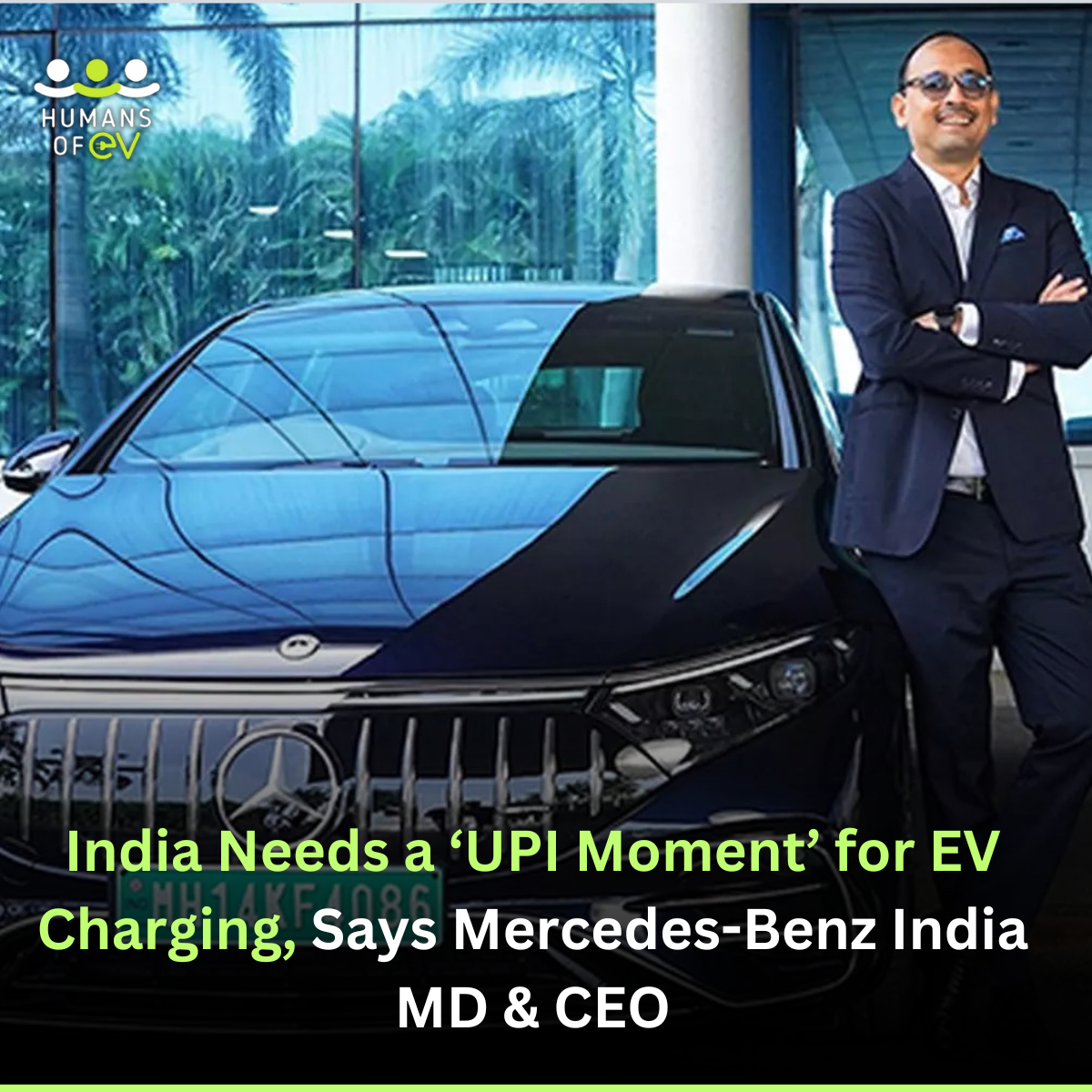
Santosh Iyer, Managing Director and CEO of Mercedes-Benz India, has called for a revolutionary shift in India’s electric vehicle (EV) charging ecosystem. Drawing a parallel to the success of the Unified Payments Interface (UPI) in transforming digital payments, Iyer emphasized the need for a seamless, all-in-one solution that would make charging EVs as simple as making a UPI payment.
The Current Challenge
India’s EV charging infrastructure is growing, with several private players entering the market. However, the experience for EV users remains fragmented. Charging stations are managed by different operators, each requiring separate apps for access, navigation, and payment. According to Iyer, this lack of standardization creates unnecessary hurdles for EV owners and could slow down the pace of adoption.
“The charging infrastructure is developing, but the biggest lag is that you need multiple apps to charge cars. While there are aggregators, it is still not easy,” he stated. Iyer argued that an ecosystem resembling UPI—a universal, integrated platform—would drastically simplify the EV charging experience, eliminating user frustration.
A Vision for Seamless EV Charging
Iyer proposed a solution: a single, unified app that integrates all charging stations across the country. This app could:
- Help users locate chargers, book slots, and initiate payments seamlessly.
- Enable cars to directly interact with the system to find suitable chargers and make payments automatically.
- Provide a consistent experience at home, at work, and on the road.
Citing the example of the Mercedes Me App, which offers these features to overseas customers, Iyer underscored how such convenience could boost EV adoption in India.
India’s Digital Edge
According to Iyer, India’s leadership in digitalization gives the country a unique advantage to create such a transformative solution. “India can even have a charging stack for the world where the entire payment system is seamless,” he noted. This would not only address the needs of Indian EV users but also position the country as a global leader in EV charging technology.
Policy Integration for Acceleration
Iyer urged policymakers to incorporate this vision into the National Automotive Mission Plan. He believes such integration would inspire confidence among investors and manufacturers, leading to accelerated growth in the EV sector. Addressing barriers like range anxiety and inconsistent charging infrastructure would further encourage consumers to make the switch to electric vehicles.
For India to achieve its ambitious EV targets, collaboration between the government, private players, and technology providers is essential. A unified charging platform, supported by a strong policy framework, could be the game-changer that accelerates India’s transition to sustainable mobility.
Conclusion
The success of UPI in revolutionizing payments in India shows the power of integration and simplicity. Applying this principle to the EV charging ecosystem could remove a significant barrier to EV adoption, paving the way for a greener and more sustainable future.
India’s digital prowess, coupled with the growing focus on sustainability, makes this vision achievable. It’s time for policymakers, industry leaders, and innovators to come together and deliver India’s ‘UPI moment’ for EV charging.



